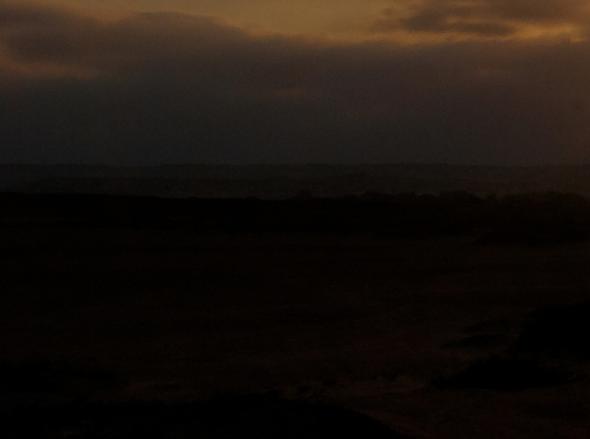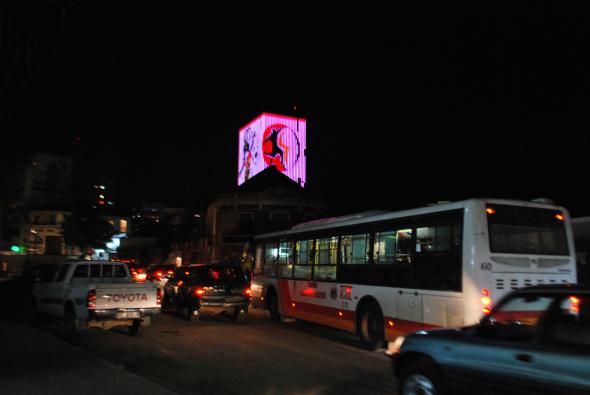City or Desert?
To western architects such as me, who have been developing their work as project designers or researchers in Angola, the issue that strikes us the most is the apparent conflict opposing Luanda to the rest of the Angolan territory.
Despite several factors like the reciprocal relation connecting rural and urban areas that populated the western ideals of the 19th and 20th centuries and was brought by the settlers, the survival strategies adopted by African families enveloping a solidarity link between city and countryside, and the business networks that are woven in the country nowadays (which transcend the country’s borders), the creation of a “network of connections” visible in the territory, could not be made.
We know that trying to understand the emerging dynamics in the country using classic categorization is an illusion. But this is an obstacle that even if we don’t know yet how to overcome, has allowed comparisons and given us references. However, we have to take certain precautions when using this categorization.
Within this perspective and being aware of the dangers we are facing, we can deal with the emotion that surrounds us when we walk through two contrasting territories: Luanda and the Namib Desert.
In Luanda, the thing that strikes out is the pulsating vitality which seems to emerge on the one hand from the population density and it’s cosmopolitanism, on the other hand from being the place where all the national and foreign strategies created to escape the world crisis are projected onto, and are focused on.
Luanda, as well as other contemporary African cities, seems to grow without any control. Perhaps due do the inadequacy felt in the administrative practices at work - the same practices present in any other city of the World - and which, according to Leonardo Benevolo and Benno Albrecht “originate in the traditions of the second half of the 19th century and become inadaptable to the transformation needed to be reestablished in a modern and ordered frame”. Also, the existence of “neighborhoods” that sprawl throughout the city and are inhabited by populations with fewer resources, prevent a simplistic definition of what benefits urban populations when facing rural ones. This fact, along with the lack of existing urban infrastructures, keeps the city hostage and prevents a real transformation.
 Night in the desert. Cristina Salvador, 2008
Night in the desert. Cristina Salvador, 2008
Until recent times, the differences between Luanda and the rest of the Angolan territory have always been increasing. It is as if all the energy of that great country and its immense resources was sucked by the country’s capital city. The difference in “accumulated energy” is certainly a source of conflicts but also a source of stimuli. These incentives are expressed in distinct ways and come to life under diverse shapes including architectural, artistic, and literary manifestations. Resulting from the cosmopolitanization of interests, an increasing number of buildings, urban symbols, objects and uses, arise in Luanda transforming the city. Maybe in the future, these recent “creations” will provoke a new blending of cultures. As an example we have the “Chinese building”. This building is completely covered with mirrors and LED lights, where at night, from anywhere in Luanda, you can watch “Tom and Jerry”.
However, the city’s transformation is made with ruptures and losses and in some cases with the disappearance of some important patrimonial heritage, which was already cosmopolitan. This is the case of the “modernist architecture” as noted by Ana Magalhaes in “Moderno Tropical - Architecture in Angola and Mozambique 1948-1975”, recently published in Portugal.
When we leave Luanda towards the Namibe and begin crossing the desert, facing the open horizon for the first time, the ideas of distance and direction as well as our perception of space, achieve an enormous range of meanings. Later, when we come closer to the shepherd’s region, it is profoundly thrilling to see the circular patterns of the sambos, which punctuate the territory. The spaces shaped as small circles of branches surrounding an espinheira, or shaped as larger circles of open clearings - caused by picking bushes that will later become fences - are the spaces supporting the practice of transhumance. There we can see a profound relation with nature’s territory. A relation so intricate that at times it is hard to differentiate what is “made by nature” and what is “man made”. In this space the available resources, the small effort needed and the location, all appear to be in consonance. As Ruy Duarte de Carvalho says in “Aviso a Navegacao”: “Here, culture can’t be understood outside a frame of interactions where all the things external to people, and to the groups that people constitute, belong, almost by themselves to nature, and are triggered and conditioned by factors in which technology performs a very small role”. However, in the vastness of that territory there is a dynamic transpiring from the practice of transhumance, and also from the unavoidable power of natural elements such as the drought, the rain, and the wind…
 Chinnese buildings. Ihosvanny, 2009
Chinnese buildings. Ihosvanny, 2009
These two life arenas - the city of Luanda and the Namib Desert - constitute two realities of one society that shape themselves and also shape the society. We add to this reflection, which tends to go on forever, two examples of how these spaces are reproduced in contemporary Angolan literature. The following paragraphs (purposely kept out of context) point out new meanings to our perception of space, through the sensitive observation done by the authors and through their distinctive language.
“The noise suffocates the city as a barbed wire blanket. At noon the rarefied air reverberates. Engines, thousands and thousands of car engines and generators, convulse moving machines. Cranes erecting buildings. Weepers grieving a dead body with long and lugubrious howls, in a random apartment of a luxurious building. Thumps, people screaming insults, clamors, barks, laughs, moans, rappers screaming out their indignation over the vast clamor of the flaming chaos.”
In José Eduardo Agualusa “As Mulheres Do Meu Pai” (2007).
“Everything is horizontal and extended, torn and unfolded in glimpses of vision. The landscape drives the eye and there is only one possible interpretation for such wideness, such enlarged dimension: to let the eye go through the oblique rug of different shades of ocher. Shades which cross themselves in a vast, low and rapid motion with no end or beginning. All tinges of ocher pouring out of each other and then set free, renovating their different tones in the wind.”
In Ruy Duarte de Carvalho “Vou lá visitar pastores“ (1999).